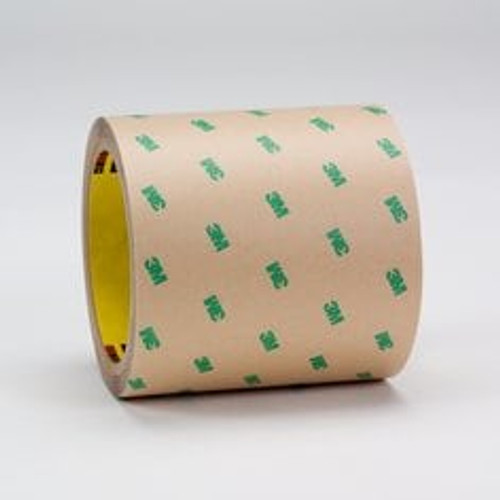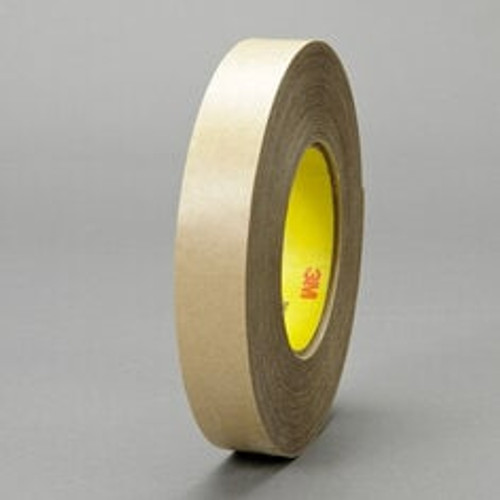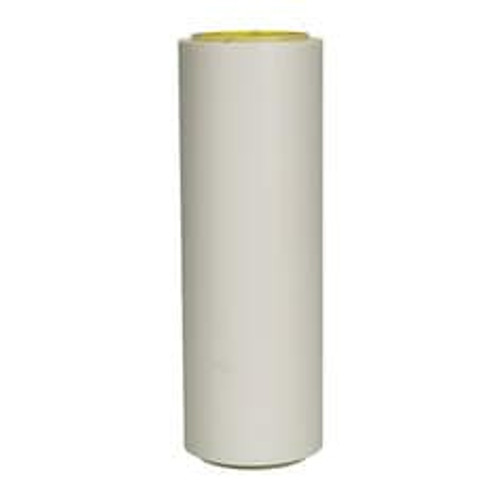Product Overview
Join High and Low Surface Energy Materials
3M™ Adhesive Transfer Tape 9675 is a 5.0 mils (.127 mm) thick transfer tape consisting of our 3M™ Adhesive 350, a modified high performance acrylic adhesive designed for applications requiring high shear strength. The adhesive is a mounted on a tan colored, 83 lb. polycoated kraft liner with a green 3M logo. This liner is moisture resistance and ideal for flatbed die-cutting when a heavy duty liner is needed. This tape is a high performance, high temperature, solvent-free industry standard tape with excellent chemical (such as gasoline, oil, sodium chloride, mild acids, alkaloids and more) and moisture resistance. It is a fiber reinforced adhesive, a feature that is important for roll stability in narrow widths. This tape is ideal for joining materials that have rougher surfaces.
Recommended Applications
- Bonding high and low surface energy materials and powder coated paints
- Narrow width automated dispensing
- Flatbed die-cutting where heavy duty liner is needed
- Bonding foams to low surface energy materials (LSE) while offering elevated temperature performance
- Gasketing
- Labeling
High Temperature Adhesion
3M™Adhesive 350 is a high-tack, high performance acrylic adhesive system featuring high initial adhesion to metals and high surface energy plastics. It offers excellent humidity, water, solvent, chemical and short term heat resistance. The adhesive is designed to provide exceptional shear strength, even at elevated temperatures. Shear strength is a measure of resistance to a sliding force along a plane that is parallel to the direction of the force. Adhesive 350 is formulated for temperate exposure up to 450°F/232°C for short periods of time and up to 300°F/149°C for extended time frames.
What are Adhesive Transfer Tapes?
In general, 3M adhesive transfer tapes are rolls of pressure sensitive adhesive pre-applied to a special release liner. The tape consists of adhesive only, and does not have any type of backing material. For application the tape is positioned adhesive side down to a surface and the liner is removed, exposing the backside of the adhesive to receive the secondary substrate.











